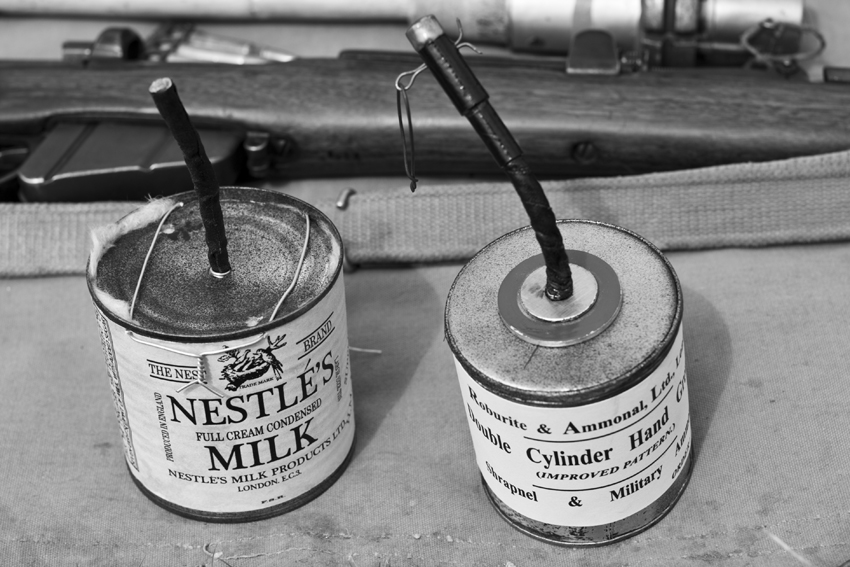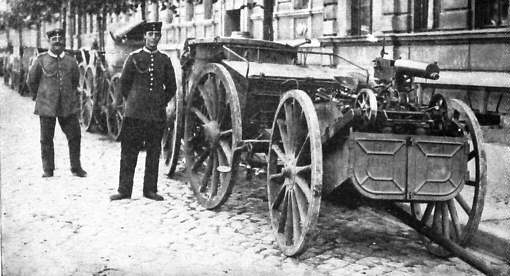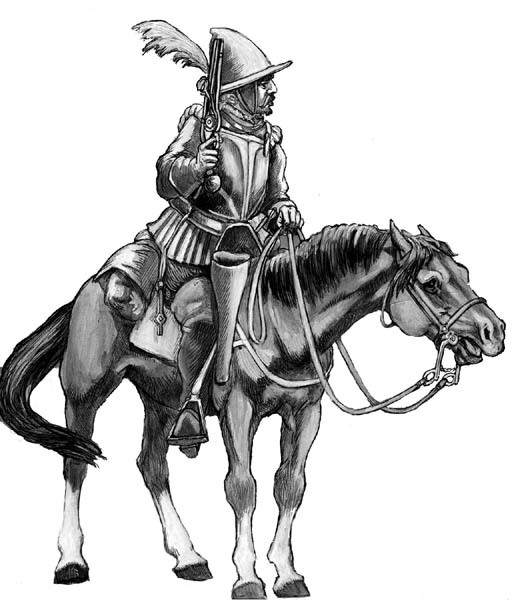Shortround6
Major General
Trying to keep from derailing the thread on aircraft maneuverability.
At times you have look at small arms of nation in context. Both in history in time, like designed/introduced in 1898 or in 1938 and how a weapon fit into the intended roles and the roles of the weapons around it.
Many of the bolt action military rifles were designed and built in the era when the infantry battalion or regiment (or larger) had 3 basic weapons that had to cover ALL aspects of combat. While other weapons existed they were extremely rare if a particular army had any at all.
1. The rifle, the basic fire power and provided the 'range' of engagement of the units.
2. The bayonet, close quarters weapon and a holdover from the 1600s, both tradition and tactics.
3. The officers pistols. Depending on the army only a few % of the weapons in the unit and in some armies, more for keeping discipline in their own troops than inflicting casualties on the other side.
Now the rifle was given a tremendous boost in power/range in the 1880/90s with the small bore high velocity smokeless powder cartridge, remember this was only less than 60 years before WW II.
But in 1914 (26 years after smokeless powder) that was the list of weapons most infantry had.
There were NO
Hand grenades, (at least general issue)
Machine guns were issued 2-4 per battalion in some armies, some had less.
infantry mortars
infantry guns
sub-machine guns.
And Artillery was in the midst of a tactical revolution which was colliding with the capabilities of the breech loading, repeating magazine rifle.
Some artillery officers thought you could wheel the guns into position 1000-3000 yds away from the enemy in a parade style formation and and blaze away rapid fire (only 17 years old) with shrapnel shells that would shred the enemy infantry. The more thoughtful officers thought this might not actually be a good idea but given the lack of communications of the time (signal flags?) putting the guns where the gun captains could not see the enemy sacrificed a lot of fire power. Before I go very far down this road let's just say that the rapid introduction of more machine guns saw the Machine gun take over this several thousand yd range area of the battlefield from the light/medium artillery. 200-300 bullets per minute from a machine gun was an effective substitute for 15-20 shrapnel shells per minute from a field gun. Machine guns, expensive as they were, were a lot cheaper than field guns.
With trench warfare came hand grenades, which were somewhat of a substitute for 20yd bayonet charges, and a variety of short range bomb throwers (trench mortars) helped fill up the battalions arsenal. Having found them so useful the infantry was very reluctant to give them up and go back to the 1914 scale of issue. Especially the 1916-1918 provision of light machine guns which could advance in battle and provide a large amount of fire power very quickly after taking position. Now at this point many armies were lucky they could get one light machine gun per platoon.
You also had sharp drop off in marksmanship between the armies of 1914 and the conscript armies of 1918. The rifles were as effective as ever but without training (and it took a lot) most troops could not use the capabilities of the rifles they had, either in speed of fire or in accuracy or indeed range.
Now with the "war to end all wars" over very few countries were willing to spend money on new rifles (or at least new designs) despite some officers/inventors seeing that things had changed and nobody was going back to 1914 with a few new 'toys' like grenades added in. So it takes until the late 20s or 1930 for most armies to start gearing up for the next generation of weapons. And again the guys in the treasury dept. will only come up with so much money. While good rifles are cheap, at least compared to other weapons, you need millions of them for a sizable army and millions of even cheap rifles adds up to a sizable sum of money.
Now with army officers asking for more machine guns, some sort of anti tank weapons (even just really big rifles), some sort of short (and/or medium) range bomb throwers like grenade launchers, small mortars, a few AA weapons or AA mounts for existing machine guns and so on and so forth the money for new rifles keeps sliding to bottom of the pile.
You also need money to pay for the training for all the new toys.
However you also have a much more capable infantry battalion or regiment. The tripod mounted machine guns can range to around 3000yds (give or take) much better than hundreds of men laying on their stomachs and firing at the 2nd hill on the right behind the white barn. You also have limited amount of capability to lob small shells over obstacles and not have to rely on artillery and since I am talking about the 1930s at this moment, the use of radios was just about non-existent. And so on.
What this means is that while the rifle was still the primary weapon of the infantry battalion it's role was changing. It no longer needed to be as long ranged. Infantry fights were becoming shorter ranged, if they were ever really long range in reality.
The 1930s also saw the light machine gun become much more prominent. Some armies were issuing one per squad instead of one per platoon.
Some were putting 3-4 light machine guns in a special platoon to act as a base of fire for the platoons without machine guns. Some armies were doling out the big heavy machine guns (not 12.7) at 8 or more per battalion in a heavy weapons company.
For small units, squad and platoon, the light machine guns were taking over as the unit fire power and the rifles were there to support the machine gun/s, act as security and/or maneuver element and in some cases, lug ammo.
A lot of this is generalities but I think you can see were some armies would up going with this with their gun selections.
The US didn't have a light machinegun. At least not by 1930s standards. The US also paid more attention (or at least claimed to) to the individual rifleman. The squads or platoons got BARs and rifles, the company got a pair of 1919 air cooled guns, Battalion had a platoon or 2 (?) of 1917 water cooled guns. By 1940 they were issuing 60mm mortars on the company level and 81mm mortars at Battalion level, they were also, in theory, up to twelve 12.7mm guns as combination AT guns/ AA guns, and there supposed to be a few 37mm AT guns somewhere. In 1939/40 there was a lot of stuff on the tables of organization that hadn't been issued yet. The US was in the process of issuing the M-1 rifle. Now the US needed the M-1 rifle to, in some ways, make up for the deficiencies in the BAR.
The US had also never issued a short barreled rifle as a carbine for specialized troops, at least not after the 1890s. No 30 in barrel rifles and 16-18 barrel carbines for Cavalry, artillery men and engineers, etc. which left the special troops with either rifles that were too big while they were doing their real jobs or they wound up with pistols. The M-1 carbine was supposed to solve that, not be a junior battle rifle.
You can look at some other countries and see different paths that were taken. But for the most part, the main rifle was overlooked while they kept sorting out the other stuff that had become more important to the battalion/regiment job/function.
Field phones and radios also allowed for faster artillery response, assuming that the country could actually supply artillery ammunition in quantity.
Artillery moved several miles back behind the front lines compared to 1914.
At times you have look at small arms of nation in context. Both in history in time, like designed/introduced in 1898 or in 1938 and how a weapon fit into the intended roles and the roles of the weapons around it.
Many of the bolt action military rifles were designed and built in the era when the infantry battalion or regiment (or larger) had 3 basic weapons that had to cover ALL aspects of combat. While other weapons existed they were extremely rare if a particular army had any at all.
1. The rifle, the basic fire power and provided the 'range' of engagement of the units.
2. The bayonet, close quarters weapon and a holdover from the 1600s, both tradition and tactics.
3. The officers pistols. Depending on the army only a few % of the weapons in the unit and in some armies, more for keeping discipline in their own troops than inflicting casualties on the other side.
Now the rifle was given a tremendous boost in power/range in the 1880/90s with the small bore high velocity smokeless powder cartridge, remember this was only less than 60 years before WW II.
But in 1914 (26 years after smokeless powder) that was the list of weapons most infantry had.
There were NO
Hand grenades, (at least general issue)
Machine guns were issued 2-4 per battalion in some armies, some had less.
infantry mortars
infantry guns
sub-machine guns.
And Artillery was in the midst of a tactical revolution which was colliding with the capabilities of the breech loading, repeating magazine rifle.
Some artillery officers thought you could wheel the guns into position 1000-3000 yds away from the enemy in a parade style formation and and blaze away rapid fire (only 17 years old) with shrapnel shells that would shred the enemy infantry. The more thoughtful officers thought this might not actually be a good idea but given the lack of communications of the time (signal flags?) putting the guns where the gun captains could not see the enemy sacrificed a lot of fire power. Before I go very far down this road let's just say that the rapid introduction of more machine guns saw the Machine gun take over this several thousand yd range area of the battlefield from the light/medium artillery. 200-300 bullets per minute from a machine gun was an effective substitute for 15-20 shrapnel shells per minute from a field gun. Machine guns, expensive as they were, were a lot cheaper than field guns.
With trench warfare came hand grenades, which were somewhat of a substitute for 20yd bayonet charges, and a variety of short range bomb throwers (trench mortars) helped fill up the battalions arsenal. Having found them so useful the infantry was very reluctant to give them up and go back to the 1914 scale of issue. Especially the 1916-1918 provision of light machine guns which could advance in battle and provide a large amount of fire power very quickly after taking position. Now at this point many armies were lucky they could get one light machine gun per platoon.
You also had sharp drop off in marksmanship between the armies of 1914 and the conscript armies of 1918. The rifles were as effective as ever but without training (and it took a lot) most troops could not use the capabilities of the rifles they had, either in speed of fire or in accuracy or indeed range.
Now with the "war to end all wars" over very few countries were willing to spend money on new rifles (or at least new designs) despite some officers/inventors seeing that things had changed and nobody was going back to 1914 with a few new 'toys' like grenades added in. So it takes until the late 20s or 1930 for most armies to start gearing up for the next generation of weapons. And again the guys in the treasury dept. will only come up with so much money. While good rifles are cheap, at least compared to other weapons, you need millions of them for a sizable army and millions of even cheap rifles adds up to a sizable sum of money.
Now with army officers asking for more machine guns, some sort of anti tank weapons (even just really big rifles), some sort of short (and/or medium) range bomb throwers like grenade launchers, small mortars, a few AA weapons or AA mounts for existing machine guns and so on and so forth the money for new rifles keeps sliding to bottom of the pile.
You also need money to pay for the training for all the new toys.
However you also have a much more capable infantry battalion or regiment. The tripod mounted machine guns can range to around 3000yds (give or take) much better than hundreds of men laying on their stomachs and firing at the 2nd hill on the right behind the white barn. You also have limited amount of capability to lob small shells over obstacles and not have to rely on artillery and since I am talking about the 1930s at this moment, the use of radios was just about non-existent. And so on.
What this means is that while the rifle was still the primary weapon of the infantry battalion it's role was changing. It no longer needed to be as long ranged. Infantry fights were becoming shorter ranged, if they were ever really long range in reality.
The 1930s also saw the light machine gun become much more prominent. Some armies were issuing one per squad instead of one per platoon.
Some were putting 3-4 light machine guns in a special platoon to act as a base of fire for the platoons without machine guns. Some armies were doling out the big heavy machine guns (not 12.7) at 8 or more per battalion in a heavy weapons company.
For small units, squad and platoon, the light machine guns were taking over as the unit fire power and the rifles were there to support the machine gun/s, act as security and/or maneuver element and in some cases, lug ammo.
A lot of this is generalities but I think you can see were some armies would up going with this with their gun selections.
The US didn't have a light machinegun. At least not by 1930s standards. The US also paid more attention (or at least claimed to) to the individual rifleman. The squads or platoons got BARs and rifles, the company got a pair of 1919 air cooled guns, Battalion had a platoon or 2 (?) of 1917 water cooled guns. By 1940 they were issuing 60mm mortars on the company level and 81mm mortars at Battalion level, they were also, in theory, up to twelve 12.7mm guns as combination AT guns/ AA guns, and there supposed to be a few 37mm AT guns somewhere. In 1939/40 there was a lot of stuff on the tables of organization that hadn't been issued yet. The US was in the process of issuing the M-1 rifle. Now the US needed the M-1 rifle to, in some ways, make up for the deficiencies in the BAR.
The US had also never issued a short barreled rifle as a carbine for specialized troops, at least not after the 1890s. No 30 in barrel rifles and 16-18 barrel carbines for Cavalry, artillery men and engineers, etc. which left the special troops with either rifles that were too big while they were doing their real jobs or they wound up with pistols. The M-1 carbine was supposed to solve that, not be a junior battle rifle.
You can look at some other countries and see different paths that were taken. But for the most part, the main rifle was overlooked while they kept sorting out the other stuff that had become more important to the battalion/regiment job/function.
Field phones and radios also allowed for faster artillery response, assuming that the country could actually supply artillery ammunition in quantity.
Artillery moved several miles back behind the front lines compared to 1914.



